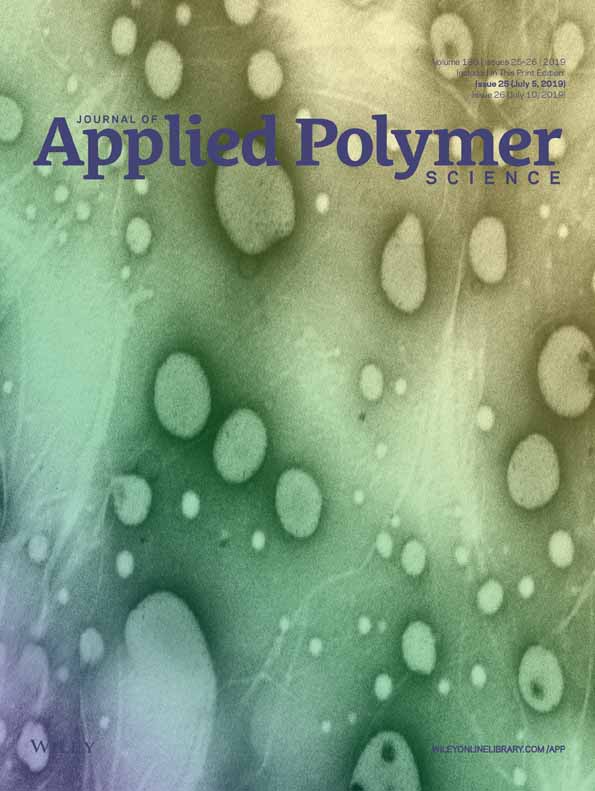Fire retardance and smoke suppression of polypropylene with a macromolecular intumescent flame retardant containing caged bicyclic phosphate and piperazine
ABSTRACT
A macromolecular intumescent flame retardant (FR) named PPPAP was designed and synthesized with phosphorus chloride (the acid source), 2,6,7-trioxa-l-phosphabicyclo[2.2.2]-octane-4-methanol (the charring agent), and anhydrous piperazine (the blowing agent). Then, it was used to prepare an intumescent flame-retardant polypropylene (FR-PP). The thermal stability, flame retardancy, and fire performance of the FR-PPs were investigated. The results show that the initial decomposition temperature and char residue at 700 °C of PPPAP were 260.8 °C and 31.8%, respectively. The limiting oxygen index (LOI) value of polypropylene (PP) was enhanced with increasing PPPAP content. With the addition of 40 wt % PPPAP, the LOI value of FR-PP was 29%, and it passed the vertical burning UL-94 V-0 rating. The cone calorimetry results indicate that not only the peak heat-release rate but also the total smoke production of PP significantly decreased to 65.7 and 79.5%, respectively, with the incorporation of only 20 wt % PPPAP. The FR mechanism suggested that PPPAP played a part in both the gas and condensed phases, and the formation of the intumescent char layer during combustion was the dominant FR mechanism. © 2019 Wiley Periodicals, Inc. J. Appl. Polym. Sci. 2019, 136, 47593.




